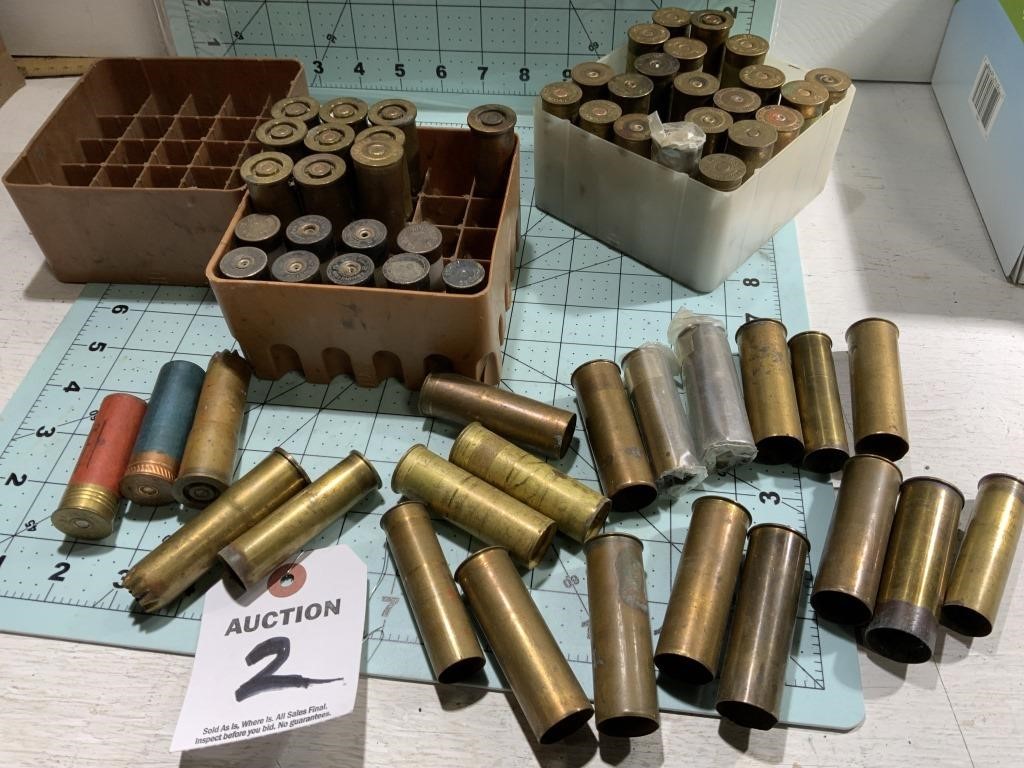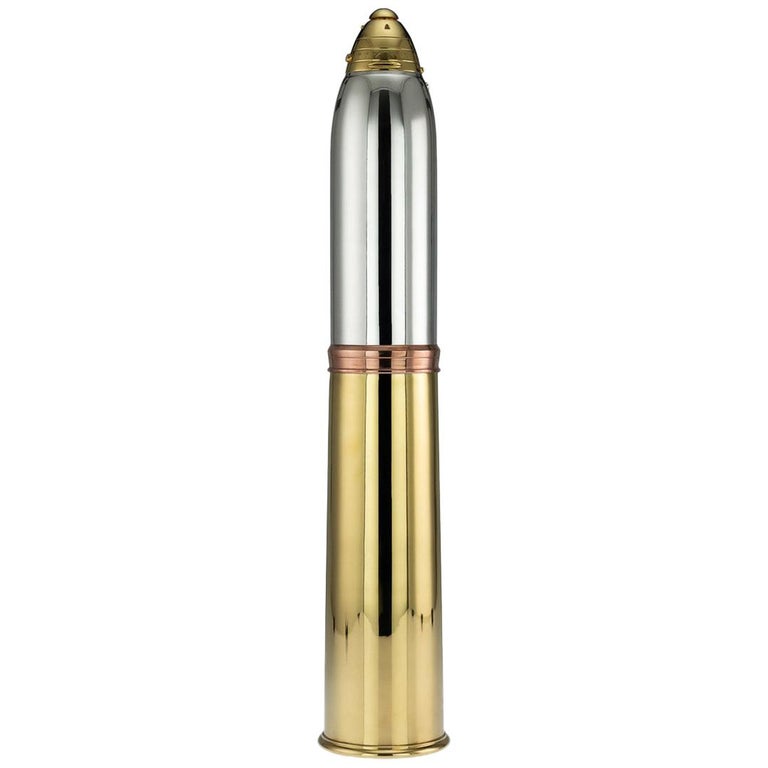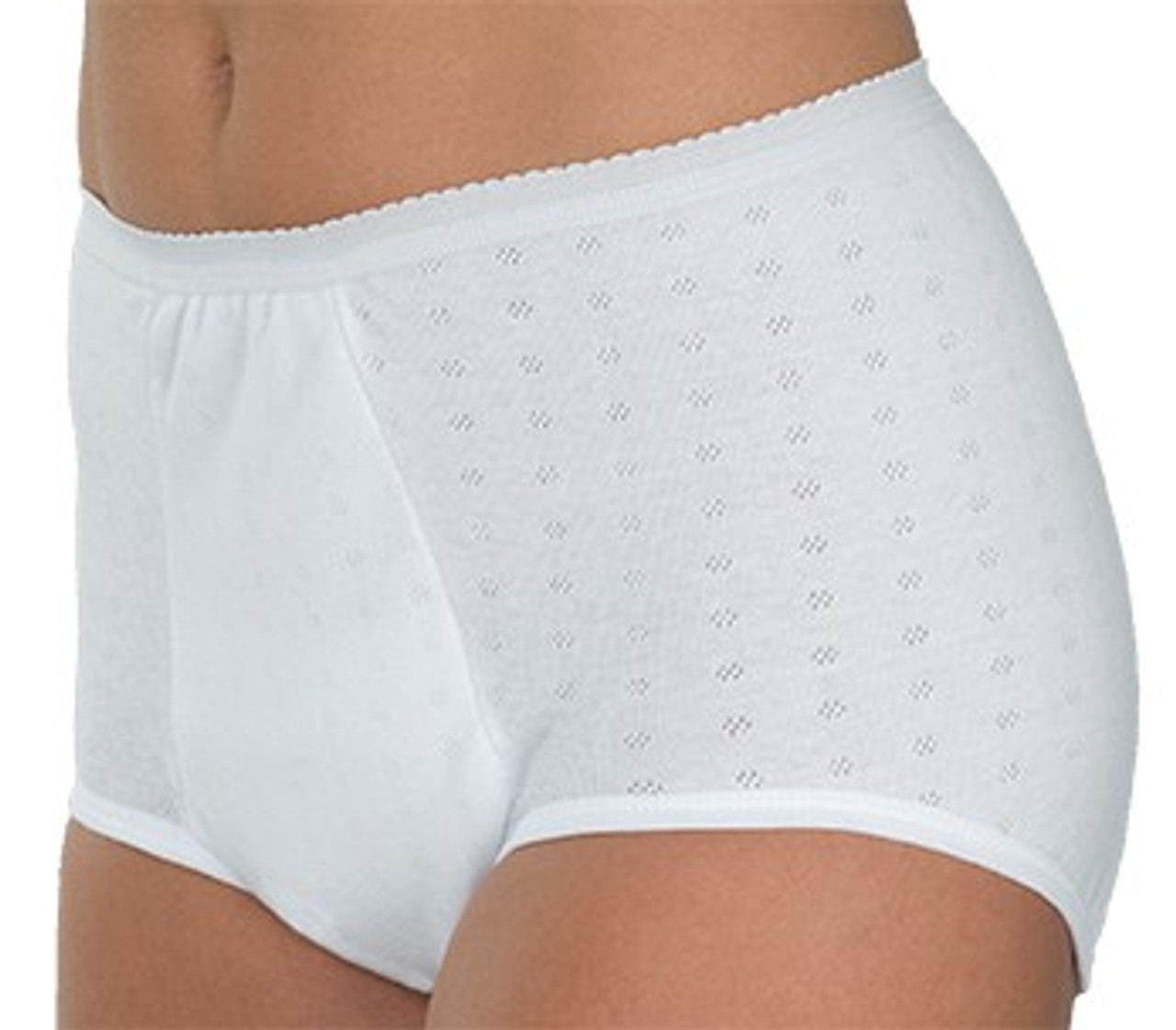Original U.S. WWI China Marine Trench Art Artillery Shells
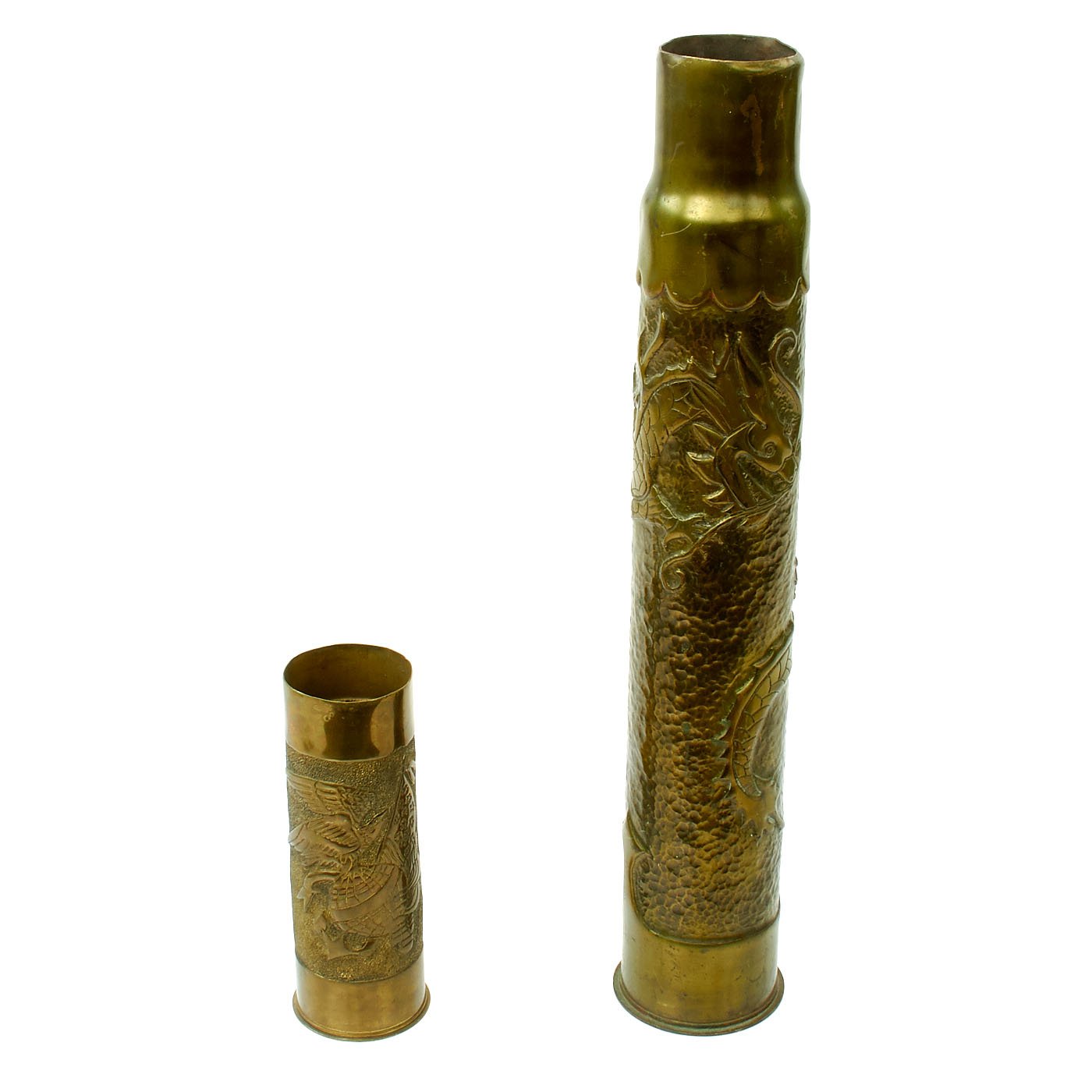
Original Items: One-of-a-kind-set. These are two brass artillery shell casings dating from 1914 and 1917. They both show USMC United States Marine Corps insignia and the large of the two features Chinese dragon motifs. Both are offered in excellent condition and measure 24" and 9" tall respectively. The term China Marines, originally referred to the United States Marines, of the 4th Marine Regiment, who were stationed in Shanghai, China from 1927 to 1941 to protect American citizens and property in the Shanghai International Settlement, during the Chinese Revolution and the Second Sino-Japanese War. Those Marines stationed at the embassy in Peking and the consulate in Tientsin referred to themselves as North China Marines.Due to the cheap labor available, China Marines lived a relatively comfortable lifestyle, with each squad able to hire Chinese men to do its cleaning and run its errands. This, plus the inexpensive goods available on the local market, made assignment to the China Marines highly coveted.Most of the China Marines were withdrawn in November 1941, but the North China Marines in Peking and Tientsin were scheduled to be withdrawn on December 10. (All weapons and ammunition except rifles and pistols had been crated and shipped by rail to the embarkation port.) However, Imperial Japan attacked the United States on December 7, and the Marine Embassy guards, plus a fourteen man Naval medical detachment, a total of 203 men, were captured and held as slave labor until the war's end in August 1945. A 204th man, a retired officer who had been living in Peking and recalled to duty, was immediately released. He continued living in Peking until he was included in the roundup of civilians and sent to the Weihsien civilian internment camp in March 1943. He was returned to the states on the exchange ship Teia Maru in Sep 1943. The last commander of the China Marines was Colonel William W. Ashurst.With the rapid expansion of the Marine Corps during World War II and the capture of the rest of the 4th Marine Regiment at Corregidor, the surviving China Marines were few in number and highly regarded.After Japan's surrender, the 1st and 6th Marine Divisions, also known as China Marines, were sent to occupy northern China from 1945 to 1948.
Original Items: One-of-a-kind-set. These are two brass artillery shell casings dating from 1914 and 1917. They both show USMC United States Marine Corps insignia and the large of the two features Chinese dragon motifs. Both are offered in excellent condition and measure 24" and 9" tall respectively. <br><br>The term China Marines, originally referred to the United States Marines, of the 4th Marine Regiment, who were stationed in Shanghai, China from 1927 to 1941 to protect American citizens and property in the Shanghai International Settlement, during the Chinese Revolution and the Second Sino-Japanese War. Those Marines stationed at the embassy in Peking and the consulate in Tientsin referred to themselves as North China Marines.<br><br>Due to the cheap labor available, China Marines lived a relatively comfortable lifestyle, with each squad able to hire Chinese men to do its cleaning and run its errands. This, plus the inexpensive goods available on the local market, made assignment to the China Marines highly coveted.<br><br>Most of the China Marines were withdrawn in November 1941, but the North China Marines in Peking and Tientsin were scheduled to be withdrawn on December 10. (All weapons and ammunition except rifles and pistols had been crated and shipped by rail to the embarkation port.) However, Imperial Japan attacked the United States on December 7, and the Marine Embassy guards, plus a fourteen man Naval medical detachment, a total of 203 men, were captured and held as slave labor until the war's end in August 1945. A 204th man, a retired officer who had been living in Peking and recalled to duty, was immediately released. He continued living in Peking until he was included in the roundup of civilians and sent to the Weihsien civilian internment camp in March 1943. He was returned to the states on the exchange ship Teia Maru in Sep 1943. The last commander of the China Marines was Colonel William W. Ashurst.<br><br>With the rapid expansion of the Marine Corps during World War II and the capture of the rest of the 4th Marine Regiment at Corregidor, the surviving China Marines were few in number and highly regarded.<br><br>After Japan's surrender, the 1st and 6th Marine Divisions, also known as China Marines, were sent to occupy northern China from 1945 to 1948.
Great example of WWI Trench Art. Trench art is a unique aspect of WWI history. This swagger stick is made from a wooden dowel with a rifle shell and

Antique Military US Army WWI Trench Art Officer's Swagger Stick
/https://tf-cmsv2-smithsonianmag-media.s3.amazonaws.com/filer/25/91/2591ded2-5ede-488d-861f-9232ff81f745/3b10296u.jpg)
The Legend of What Actually Lived in the No Man's Land Between World War I's Trenches, History

How The Machine Gun Changed Combat During World War I

Paintings, protest and propaganda: A visual history of warfare

The Evolution of the American Tank

Wartime Military Memorabilia Auction Selling Civil War, WWI, WWII, Vietnam Militaria Collections 9-22
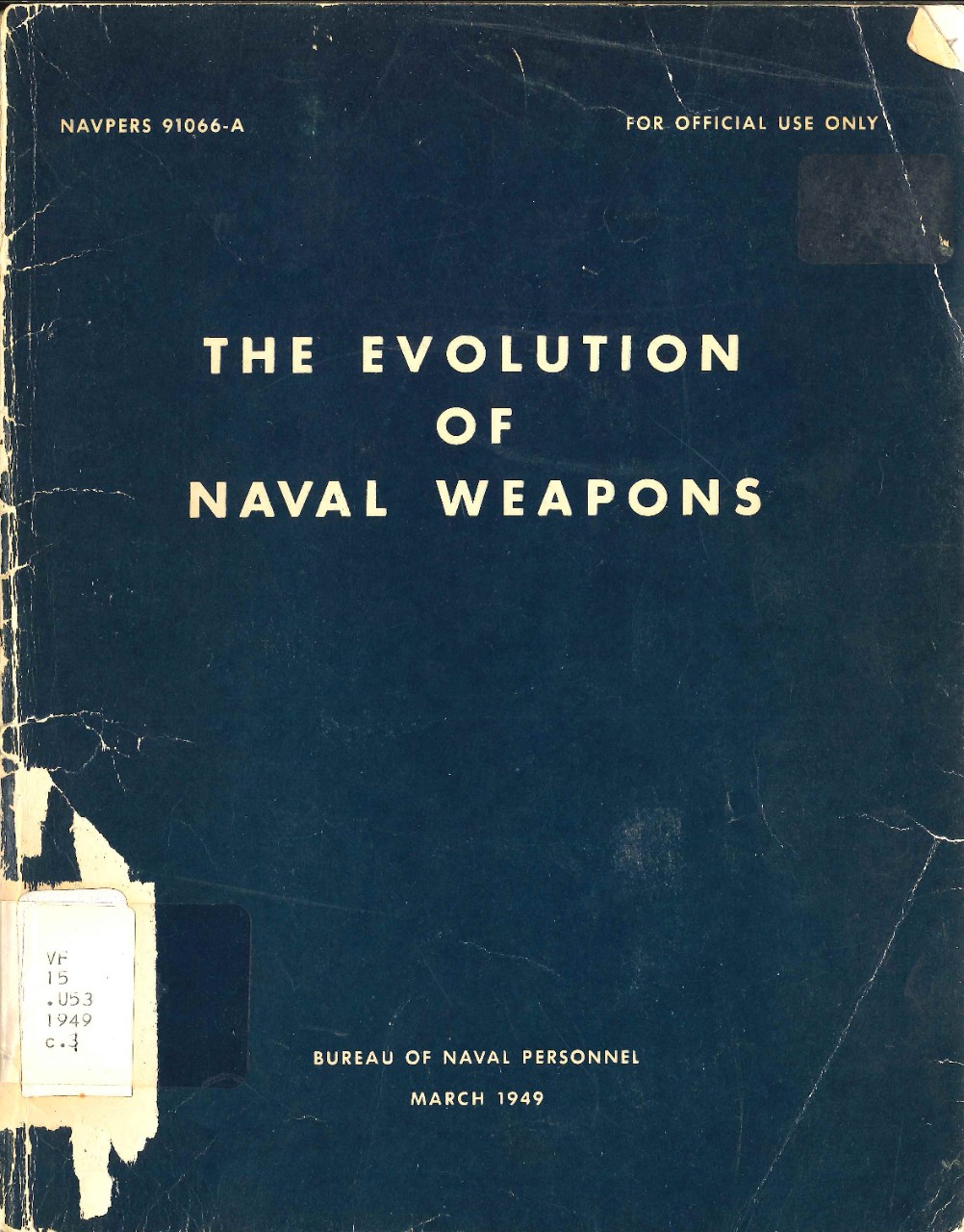
Evolution of Naval Weapons
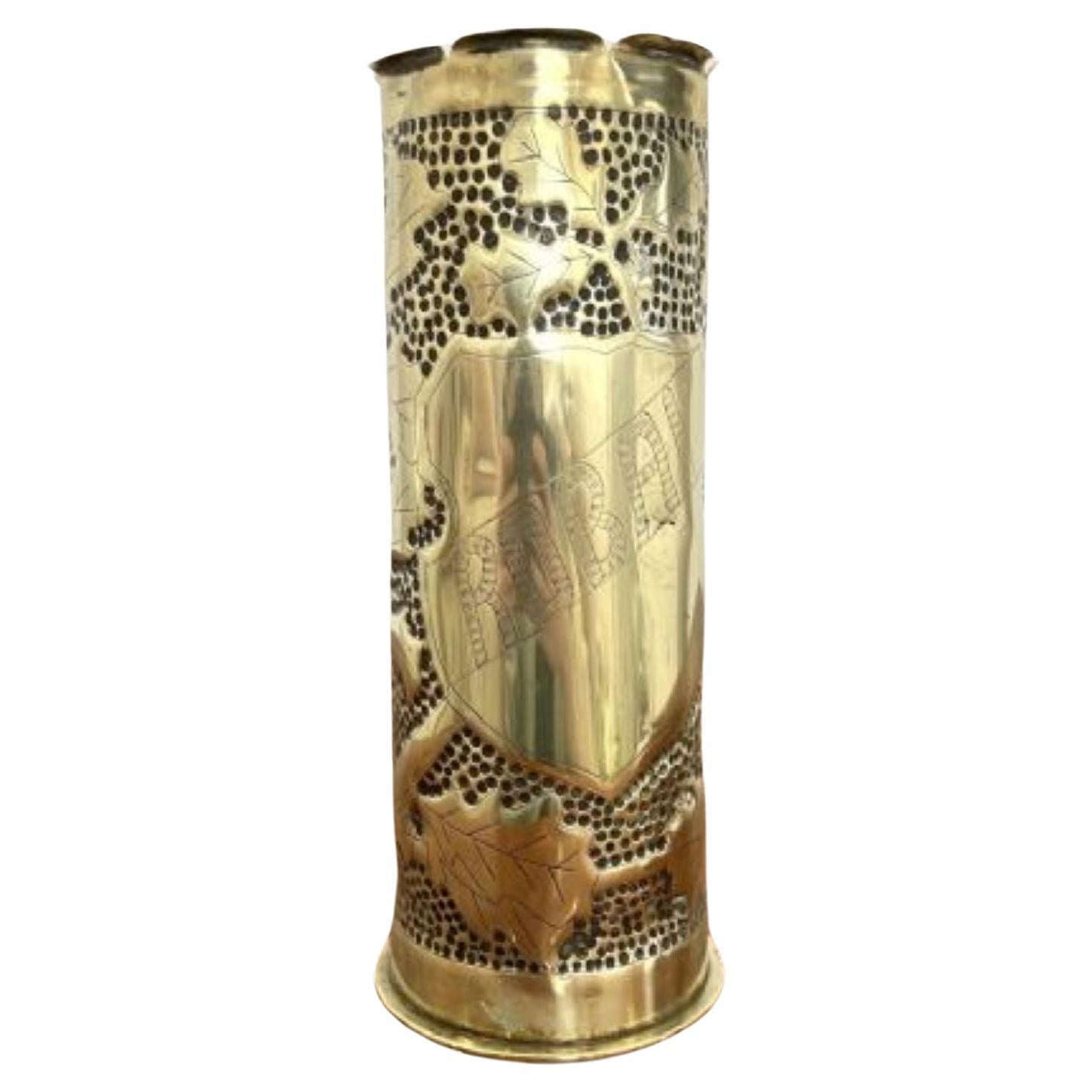
Quality antique Ww1 trench art brass empty shell case For Sale at 1stDibs

1943 Dated 90mm M19 Anti-Aircraft Artillery Shell Casing Trench Art Ashtray — Premier Relics

WW1 Trench Art Vase, Trench Art, Military Art, Historical Art

Memorabilia - Trench Art - Plane

World War I in Photos: Global Conflict - The Atlantic
Were there really piles of spent artillery shells littered across the battlefields of WW1? If so, what'd they do with them all after the Armistice? - Quora

World War I in Photos: Introduction - The Atlantic
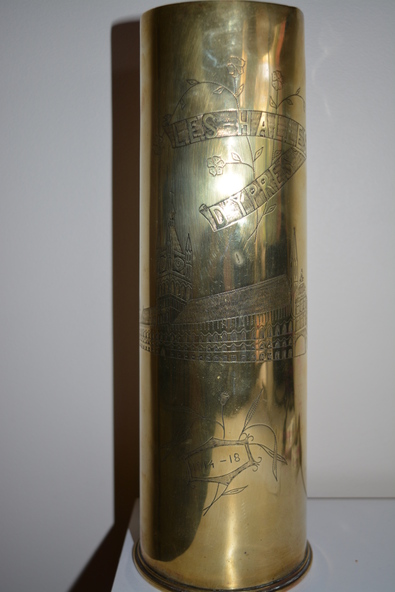
Memorabilia - Trench Art - Vase, unknown
